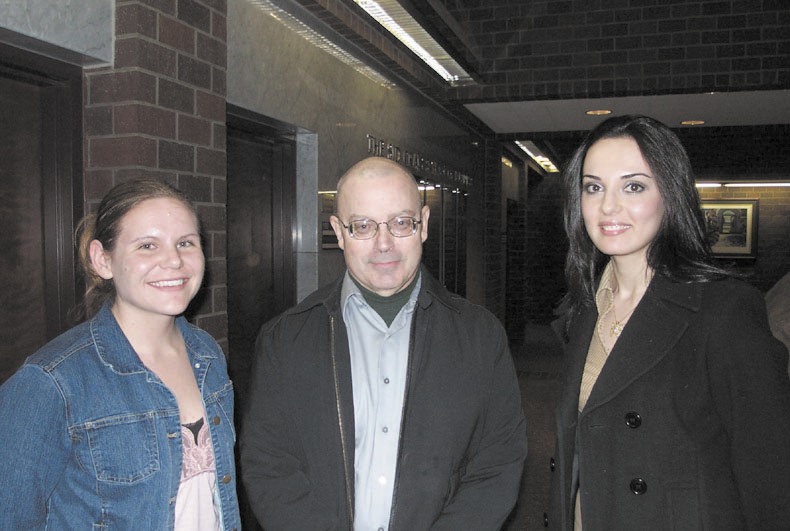Zhanna Bagdasarov and Christina Karakashian
Staff Writers
 Henry S. Kazan visiting professor Dr. James Reid held the first of his three part lecture series on February 21, covering the inner dimension of the Armenian Genocide. Dr. Reid is currently teaching a course which looks at the Genocide through the eyes of witnesses and survivors of the massacres. The class is structured to help students discover the antecedents of the Genocide through the perspective of those that actually suffered through it. Dr. Reid’s aim is to provide students with an understanding of how the alienation of the Armenians came about and what lead to the final plan for complete destruction of Armenia.
Henry S. Kazan visiting professor Dr. James Reid held the first of his three part lecture series on February 21, covering the inner dimension of the Armenian Genocide. Dr. Reid is currently teaching a course which looks at the Genocide through the eyes of witnesses and survivors of the massacres. The class is structured to help students discover the antecedents of the Genocide through the perspective of those that actually suffered through it. Dr. Reid’s aim is to provide students with an understanding of how the alienation of the Armenians came about and what lead to the final plan for complete destruction of Armenia.
Dr. Reid began his lecture by introducing the process of looking at the trauma survivors faced due to the Genocide. The lecture focused on two major symptoms of Post Traumatic Stress Disorder in survivors: the threat of death and the sense of a foreshortened future.
Dr. Reid explored the symptoms of Post Traumatic Stress Disorder in detail, and explained that the central element of trauma is the threat of death itself. He further discussed two aspects of this threat: the life-death continuum and the death imprint. The life-death continuum is one of the aspects identified in people who are faced with death and was proposed by Dr. Reid. This category states that during an extended trauma such as a campaign or a death march, a person begins to feel that death, and not the hope for continued life, dominates his or her mind and outlook. To exemplify this concept, Dr. Reid read a narrative from Reverend Abraham Hartunian’s memoir Neither to Laugh Nor To Weep.
The death imprint, on the other hand, is a concept created by Robert J. Lifton and refers to the individual being haunted by the sight and/or the threat of death for many years after the ending of the traumatic events. According to Dr. Reid, a person begins to define himself or herself by their experience with death or near-death and starts to differentiate himself or herself from others due to the trauma.
The second symptom, a sense of a foreshortened future, was also discussed as a feeling of an “unnatural existence in the survivor.” This aspect of the Post Traumatic Stress Disorder states that the traumatized person does not expect to have a normal life span, a career, a family or children. Dr. Reid provided Bob Der Mugrdechian’s biography of his father Anooshavan, Anooshavan: The Intrepid Survivor, as the example of this symptom. It is also important to note that this aspect is directly related to the life-death continuum experienced during the trauma. One might also find that superstitions of any type might indicate the presence of this symptom in people.
Throughout his lecture Dr. Reid provided narratives from the memoirs and letters of survivors with personal experiences of genocide to further illustrate these symptoms of Post Traumatic Stress Disorder. Included in these examples were accounts by Hagop Der Garabedian, Abraham Hartunian, Anooshavan Der Mugrdechian and others.
Looking at genocide through the eyes of survivors and their psychological states provides us with a unique outlook on the Genocide rather than mere historical facts. When studying historical facts of the Genocide and what was lost is often what people focus on, but through his series of lectures Dr. Reid is exploring deeper into genocide and the effects it also has on survivors of such traumatic events.
Dr. Reid’s next lecture in the series will be held on March 22.
 Hye Sharzhoom Armenian Action
Hye Sharzhoom Armenian Action